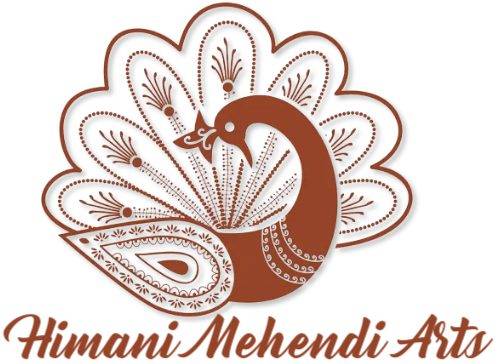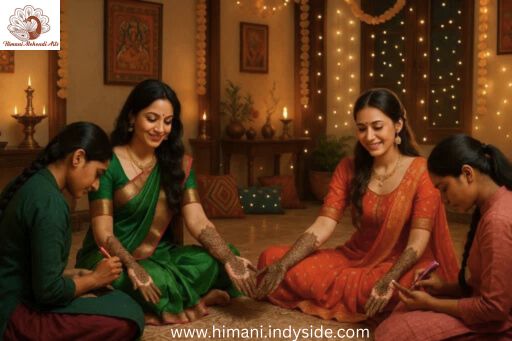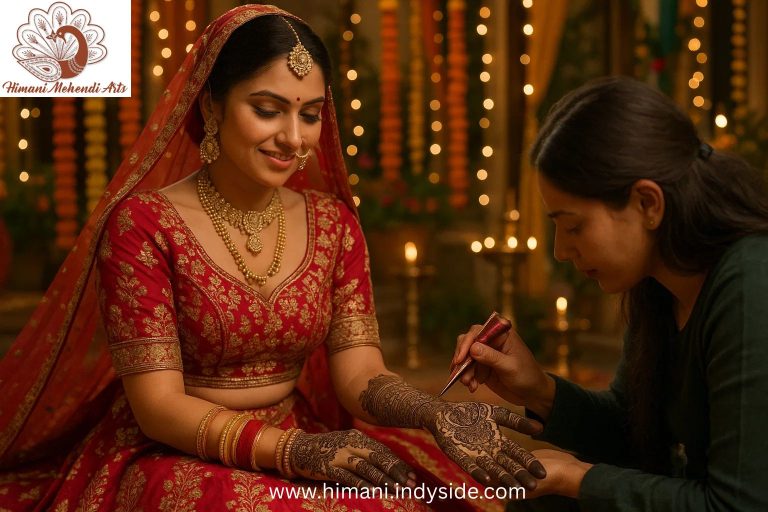Mehendi, also called henna, is not just body art—it’s a deep expression of tradition, culture, and spirituality. The cultural significance of mehendi extends far beyond aesthetics. In fact, it plays a central role in Indian weddings, festivals, and family rituals.
The Cultural Significance of Mehendi in Indian Traditions
Mehendi has been part of Indian tradition for thousands of years. Its use in rituals, ceremonies, and joyous occasions clearly shows how closely it is tied to cultural identity.
In many families, the practice of applying henna has been passed down from one generation to the next. Therefore, it carries meanings of joy, luck, and spiritual protection.
Cultural Significance of Mehendi in Weddings and Ceremonies
Symbolism of Mehendi in Indian Bridal Traditions
During Indian weddings, the mehendi ceremony is one of the most anticipated events. Brides get detailed henna designs applied to their hands and feet. Moreover, it is believed that the darker the stain, the deeper the love and affection between the couple.
Beyond beauty, these designs symbolize fertility, prosperity, and blessings for the bride’s new journey.
Cultural Importance of Bridal Mehendi Designs
Motifs such as peacocks, lotus flowers, vines, and paisleys are not random. In fact, they each carry symbolic meanings. For instance, peacocks represent beauty, while vines and leaves reflect growth and renewal. Brides often include the groom’s initials hidden within the patterns, adding fun and personalization.
Cultural Significance of Mehendi in Indian Festivals
Henna as a Cultural Tradition During Festivals
Mehendi is a joyful part of many Indian festivals like Karwa Chauth, Teej, Eid, and Diwali. In these gatherings, women come together, decorate their hands, sing traditional songs, and celebrate unity.
As a result, this practice strengthens emotional bonds and reinforces cultural pride.
Spiritual Meaning of Mehendi in Celebrations
In many traditions, mehendi represents purity, protection, and devotion. Therefore, applying it before festive occasions is believed to invite blessings and drive away negativity.
Traditional Mehendi Art as a Symbol of Heritage
Cultural Value of Mehendi Across Generations
Mothers, grandmothers, and daughters often sit together and apply henna. These moments are not just about design; instead, they are about storytelling, laughter, and shared values.
Consequently, this ongoing exchange keeps traditional mehendi art alive and relevant across generations.
Fusion of Modern and Traditional Henna Designs
While modern brides experiment with new styles, many still value the essence of classic Indian motifs. This creative fusion not only respects tradition but also reflects personal expression.
The Global Recognition of Mehendi’s Cultural Value
Cultural Symbolism of Mehendi in Global Celebrations
Today, mehendi is recognized across the world. International brides, designers, and celebrities now embrace henna for its cultural beauty and depth.
Despite this global exposure, the core cultural heritage of mehendi remains unchanged.
Conclusion: Celebrating the Cultural Significance of Mehendi
Mehendi isn’t just beautiful—it’s meaningful. From weddings and festivals to quiet family gatherings, its presence tells a story. That story is one of love, tradition, and identity.
Through each swirl and motif, the cultural significance of mehendi lives on, connecting generations through color, ritual, and emotion. Ultimately, it is not just a form of art—but a celebration of heritage.




